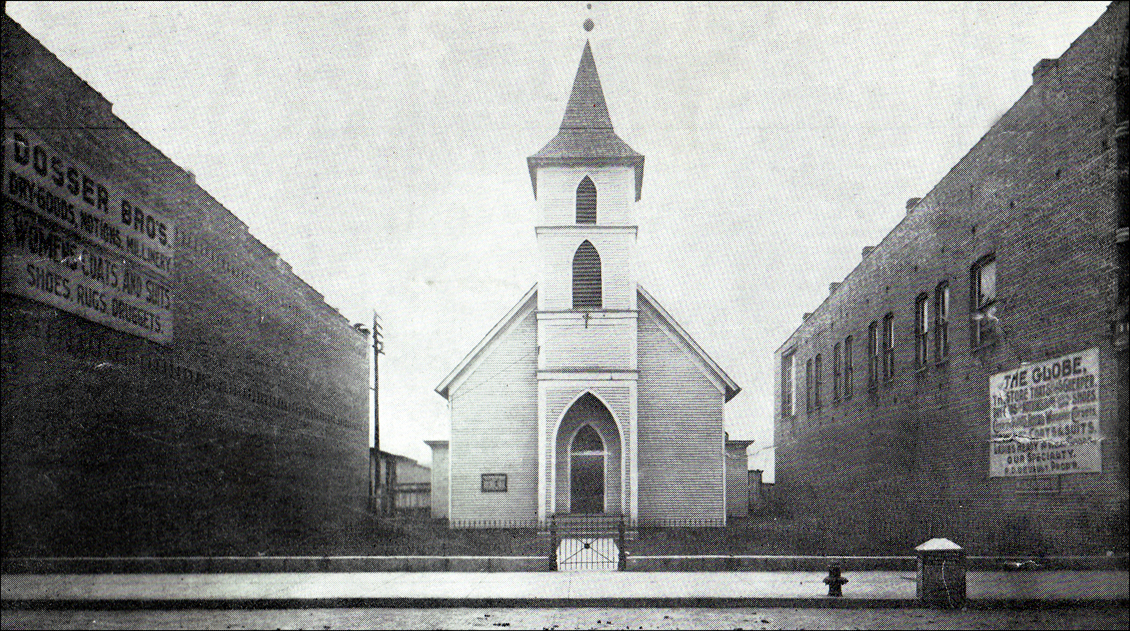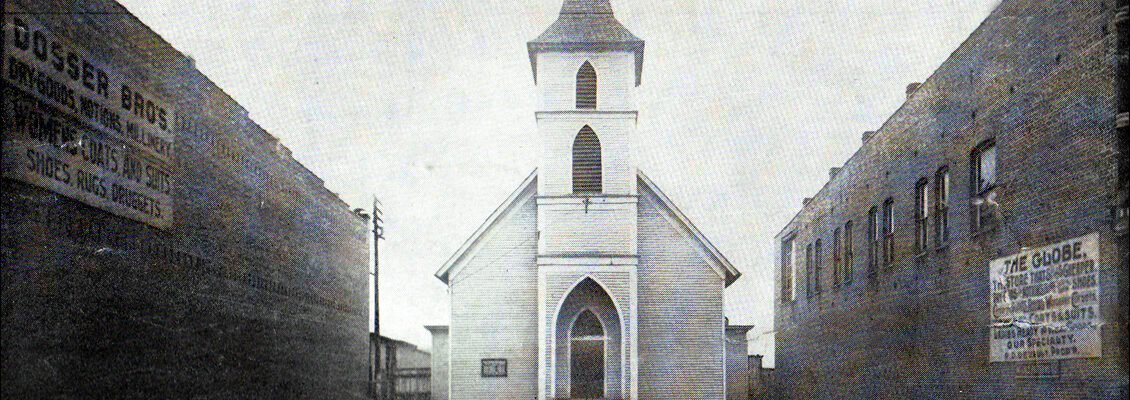Recently, I wrote about a grievous fire on May 5, 1905 that decimated the businesses in the rectangular block between E. Main, Spring, Jobe and Roan streets. The amazing occurrence was when flames approached the wooden “Little White Church,” but then made an abrupt diversion from it leaving the building unscathed. Many people saw it as a miracle of God.

Little White Baptist Church That Once Stood on E. Main Street and Spared from a Terrible Fire
Today's column photo depicts the First Baptist Church, as it appeared in that era. According to a booklet, “History of Central Baptist Church, Johnson City, Tennessee in Celebration of the 100th Anniversary, 1869-1969,” the structure stood at 222-26 E. Main, the location later becoming Sterchi Brothers Stores.
In spite of the awe-inspiring sight, the fire prompted many church members to question the logic of having a house of worship situated in the heart of the town's business district.
By 1907, the members joined in the organization of a new church which would meet in a school building located at the corner of Roan Street and Watauga Avenue, a site that would eventually be the location of the Almeda Apartments. The new church, known as the Roan Street Baptist Church, was constituted May 8 of that year with 102 charter members.
During the three-year period of separation from 1907-10, there was an ever-growing sentiment that a mistake had been made. Neither congregation was financially able to build a house of worship that would be an honor to the denomination. With rapidly increasing population in that area and Baptists coming from various parts of the country, the responsibility was even greater.
These realizations prompted both churches to act simultaneously. On April 6, 1910, a committee from First Baptist Church was appointed to meet with a similar committee from Roan Street Baptist Church for the purpose of working out detains subsequent to a union of the two church into a new organization, to be perfected on the night of April 21, 1910.
The meeting was held and the agreement was perfected, This agreement was in substance: 1. That all property held by the trustees of the First and Roan Street Baptist churches be transferred to the trustees of the consolidated church. 2. That the new church take steps at the earliest possible date after organization to build a modern house of worship on the Isaac Harr or the G.M. Sitton lot, both of which are located on North Roan Street. 3. That the new church have a board of 12 deacons consisting of the present deacons of the two churches. 4. That there be five trustees consisting of I.A. Bittle, B.D. Akard, Aldine Swadley, C.E. Cargille, and S.E. Bayless. 5. That J.W. Houtz would be church clerk and T.A. Tittle, church treasurer.
Both churches were in session on April 21, 1910 and adopted this agreement. The trustees of the First Church and those of the Roan Street Church were authorized, ordered, empowered, and directed to transfer all property owned by each church to the trustees of the new organization, which was to be known as Central Baptist Church of Johnson City, Tennessee.
The Roan Street church building was retained as a place of worship until the new church house could be constructed. The Rev. Tom Davis, who had been pastor of the Roan Street congregation was elected pastor of the new organization.
The Isaac Harr lot was purchased on July 2, 1910 for the sum of $5,000, $1,750 cash in hand and notes payable in two years for the remainder of the purchase price.
In the early spring of 1912, the corner stone for the new house of worship was laid. One year later, the congregation moved into the new church house, Although it was not entirely completed, it was a day of rejoicing and thanksgiving by the congregation. Central Baptist Church was incorporated on Sept. 3, 1912.
My grandparents, Mr. and Mrs. Earl B. Cox, were wed in 1911 and became early members of that church.

Comments are closed.